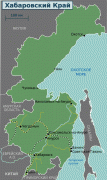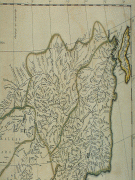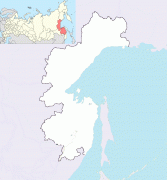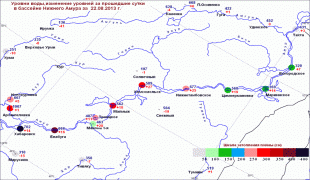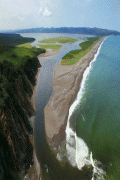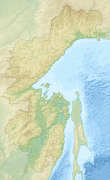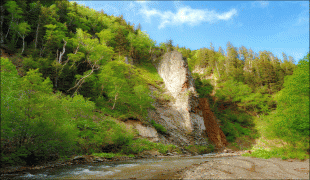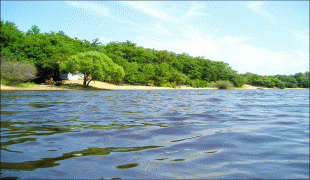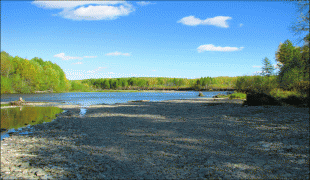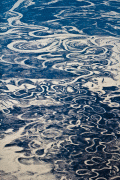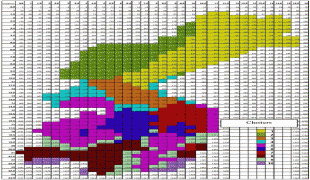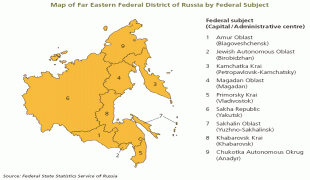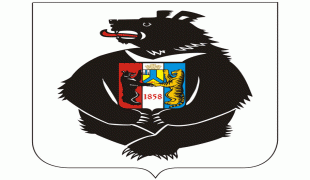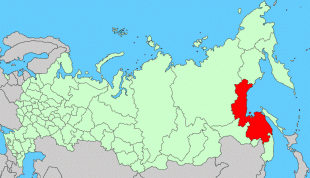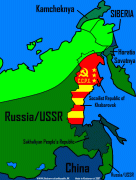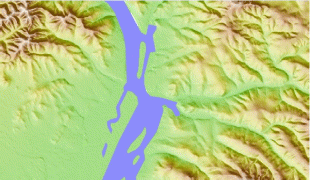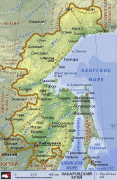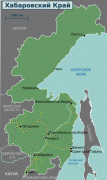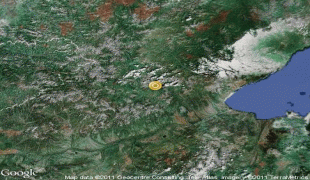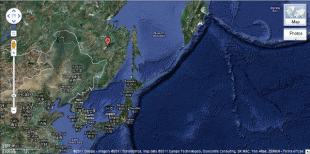Khabarovsk Krai (Khabarovskiy Kray)
 |
 |
The southern region lies mostly in the basin of the lower Amur River, with the mouth of the river located at Nikolaevsk-on-Amur draining into the Strait of Tartary, which separates Khabarovsk Krai from the island of Sakhalin. The north occupies a vast mountainous area along the coastline of the Sea of Okhotsk, a marginal sea of the Pacific Ocean. Khabarovsk Krai is bordered by Magadan Oblast to the north, Amur Oblast, Jewish Autonomous Oblast and the Sakha Republic to the west, Primorsky Krai to the south, and Sakhalin Oblast to the east.
The population consists of mostly ethnic Russians, but indigenous people of the area are numerous such as the Tungusic peoples (Evenks, Negidals, Ulchs, Nanai, Oroch, Udege) and Amur Nivkhs and Ainu.
Khabarovsk Krai shares its borders with Magadan Oblast in the north, with the Sakha Republic and Amur Oblast in the west, with the Jewish Autonomous Oblast, China (Heilongjiang), and Primorsky Krai in the south, and is limited by the Sea of Okhotsk in the east. In terms of area, it is the fourth-largest federal subject within Russia. Major islands include Shantar Islands.
Taiga and tundra in the north, swampy forest in the central depression, and deciduous forest in the south are the natural vegetation in the area. The main rivers are the Amur, Amgun, Uda and Tugur, among others. There are also lakes such as Bokon, Bolon, Chukchagir, Evoron, Kizi, Khummi, Orel and Udyl, among others.
Khabarovsk Krai has a severely continental climate with its northern areas being subarctic with stronger maritime summer moderation in the north. In its southerly areas, especially inland, annual swings are extremely strong, with Khabarovsk itself having hot, wet and humid summers which rapidly transforms into severely cold and long winters, where temperatures hardly ever go above freezing. This is because of the influence of the East Asian monsoon in summer and the bitterly cold Siberian High in winter. The second-largest city of Komsomolsk-on-Amur has even more violent temperature swings than Khabarovsk with winter average lows below -30 C but in spite of this avoiding being subarctic because of the significant heat in summer.
The main mountain ranges in the region are the Bureya Range, the Badzhal Range (highest point 2221 m high Gora Ulun), the Yam-Alin, the Dusse-Alin, the Sikhote-Alin, the Dzhugdzhur Mountains, the Kondyor Massif, as well as a small section of the Suntar-Khayata Range, the Yudoma-Maya Highlands and the Sette-Daban in the western border regions. The highest point is 2933 m high Berill Mountain.
There are a number of peninsulas along the krai's extensive coast, the main ones being (north to south) the Lisyansky Peninsula, Nurki Peninsula, Tugurskiy Peninsula and the Tokhareu Peninsula.
The main islands of Khabarovsk Krai (north to south) are Malminskiye Island, the Shantar Islands, Menshikov Island, Reyneke Island (Sea of Okhotsk), Chkalov Island, Baydukov Island and the Chastye Islands. The island of Sakhalin (Russia's largest) is administered separately as Sakhalin Oblast, along with the Kuril Islands.
Map - Khabarovsk Krai (Khabarovskiy Kray)
Map
Country - Russia
 |
 |
| Flag of Russia | |
The East Slavs emerged as a recognisable group in Europe between the 3rd and 8th centuries CE. The first East Slavic state, Kievan Rus', arose in the 9th century, and in 988, it adopted Orthodox Christianity from the Byzantine Empire. Rus' ultimately disintegrated, with the Grand Duchy of Moscow growing to become the Tsardom of Russia. By the early 18th century, Russia had vastly expanded through conquest, annexation, and the efforts of Russian explorers, developing into the Russian Empire, which remains the third-largest empire in history. However, with the Russian Revolution in 1917, Russia's monarchic rule was abolished and replaced by the Russian SFSR—the world's first constitutionally socialist state. Following the Russian Civil War, the Russian SFSR established the Soviet Union (with three other Soviet republics), within which it was the largest and principal constituent. At the expense of millions of lives, the Soviet Union underwent rapid industrialization in the 1930s, and later played a decisive role for the Allies of World War II by leading large-scale efforts on the Eastern Front. With the onset of the Cold War, it competed with the United States for global ideological influence; the Soviet era of the 20th century saw some of the most significant Russian technological achievements, including the first human-made satellite and the first human expedition into outer space.
Currency / Language
| ISO | Currency | Symbol | Significant figures |
|---|---|---|---|
| RUB | Russian ruble | ₽ | 2 |
| ISO | Language |
|---|---|
| CE | Chechen language |
| CV | Chuvash language |
| KV | Komi language |
| RU | Russian language |
| TT | Tatar language |






